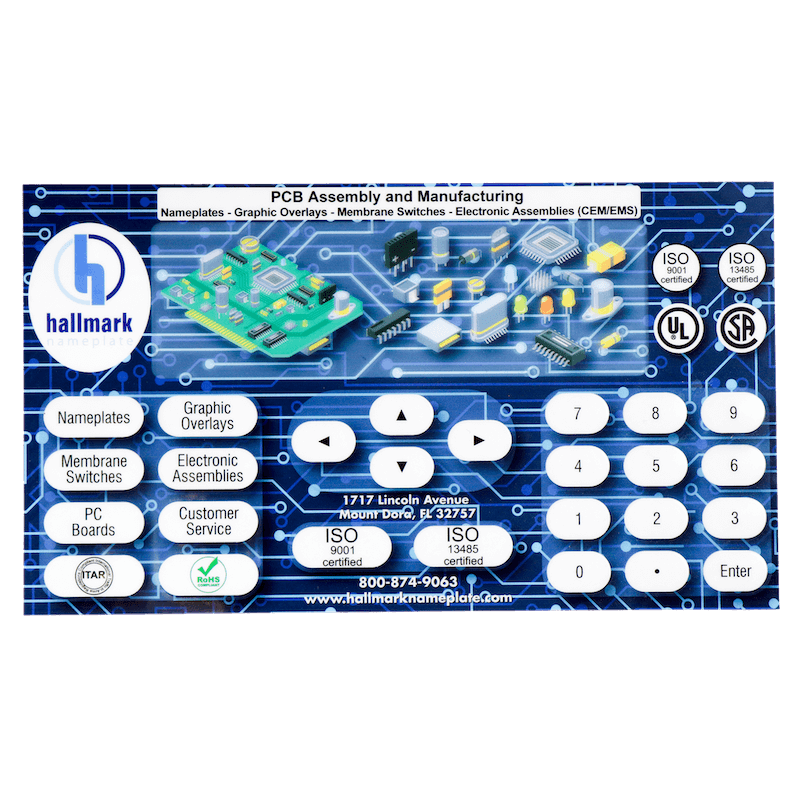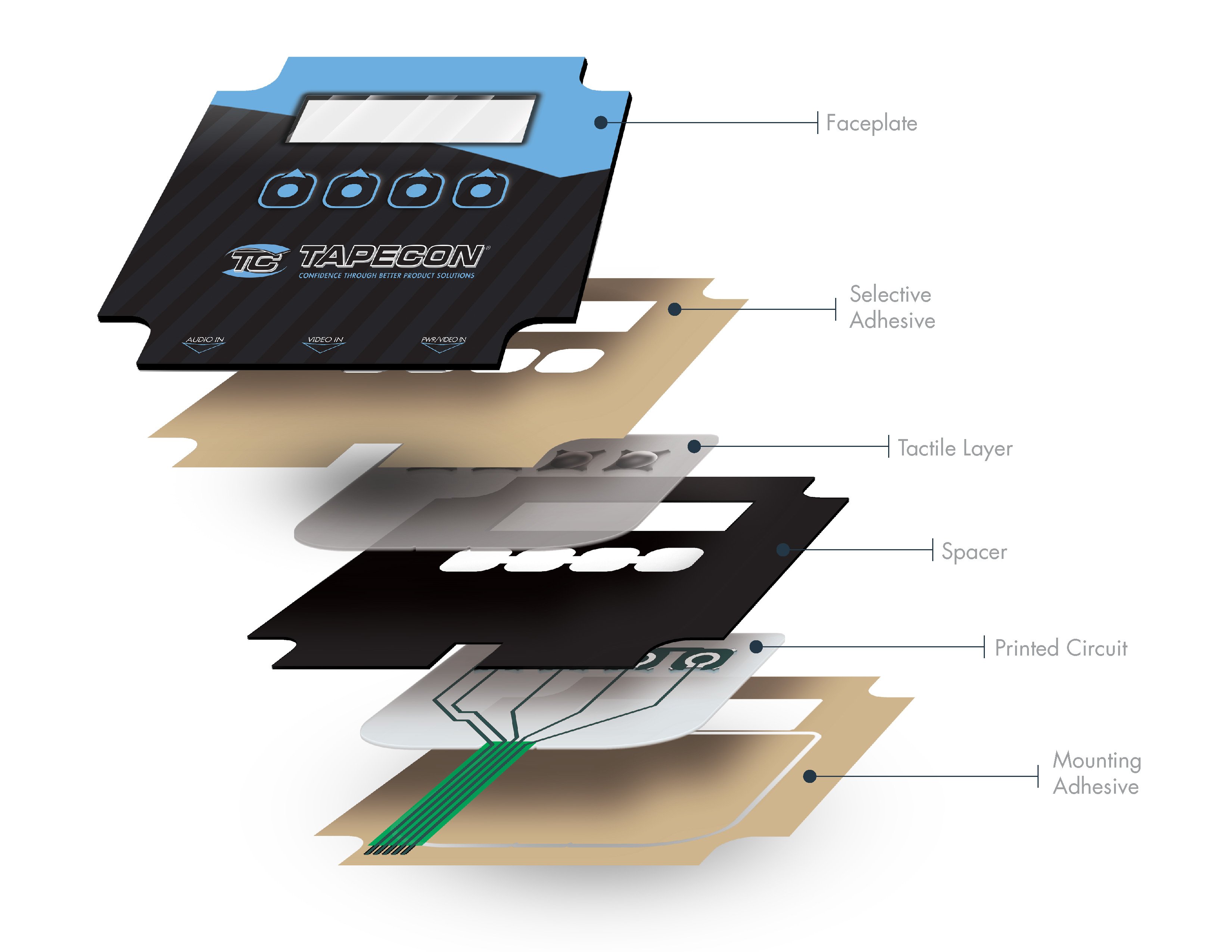Recognizing the Value of Membrane Switches in User User Interfaces
Membrane buttons are essential components in the style of effective interface, helping with not just performance yet likewise enhancing aesthetic allure and individual communication. Their distinct attributes, such as resistance to adjustable layouts and environmental aspects, make them suitable for a varied selection of applications across numerous industries. As we check out the future trends and different benefits related to Membrane innovation, it becomes clear that these switches are greater than just components; they stand for a merging of development and functionality. The effects of this technology on individual experience deserve checking out even more.
What Are Membrane Buttons?

The spacer layer, which consists of sticky residential properties, permits the separation of the circuit layer from the overlay, ensuring that the button stays in a non-activated state up until pressed. When stress is put on the overlay, it compresses the spacer layer, linking the space and completing the circuit in the underlying layer. This design not just decreases the physical space needed for standard mechanical switches yet likewise enhances the durability of the tool, as Membrane buttons are typically resistant to dirt, moisture, and various other environmental factors.
Generally discovered in applications varying from customer electronics to clinical devices, Membrane switches are important to modern innovation, offering a efficient and easy to use interface that lines up with contemporary style requirements.
Benefits of Membrane Switches
While many switch innovations exist, Membrane Switches deal distinctive advantages that make them specifically desirable in different applications. Among the primary advantages of Membrane switches is their small layout, which enables space-saving applications in tools where real estate is restricted. Their slim profile not only boosts visual appeal however additionally helps with light-weight building and construction.
Another considerable benefit is their resistance to environmental aspects. Membrane switches are usually secured versus moisture, dust, and pollutants, making them suitable for usage sought after atmospheres, such as medical tools and commercial devices. This longevity prolongs the lifespan of the switch, lowering maintenance prices and boosting reliability.
Furthermore, Membrane switches can be personalized to satisfy details layout needs, incorporating unique graphics and colors that enhance user interaction. Their tactile feedback options can also be tailored to offer a rewarding individual experience. Furthermore, Membrane switches are affordable, particularly in high-volume applications, as they can be produced efficiently.
Applications in Numerous Industries

In the customer electronics sector, Membrane switches prevail in gadgets such as microwaves, washing makers, and push-button controls. Their responsive comments and aesthetic choices enhance customer experience while offering a streamlined, contemporary appearance. Furthermore, automotive makers utilize Membrane switches in control panel controls and infomercial systems, where area is restricted, and individual involvement is vital.
Moreover, the industrial field leverages Membrane buttons in control panels for machinery and devices, enabling user-friendly procedure in frequently rough environments. Their his comment is here resistance to chemicals and dampness ensures durability and integrity in these applications. In general, the versatility of Membrane Switches contributes substantially to their widespread use, making them vital in various technological domain names.
Layout Considerations for Membrane Switches

When creating Membrane buttons, numerous key considerations should be taken right into account to make certain optimum functionality and user experience. Firstly, the option of materials is vital; picking sturdy, high-quality substrates can enhance the button's longevity and resistance to environmental factors such as moisture and temperature variations.
Secondly, the layout of the visuals overlay must prioritize clarity and ease of usage. Symbols and text should be legible, and the format needs to assist in user-friendly interaction (membrane switches). Additionally, responsive comments is vital; incorporating a responsive dome or various other systems can enhance the customer experience by supplying physical confirmation of activation
Another vital aspect is the switch's electric performance. Developers must guarantee that the conductive traces are appropriately created to great site lessen resistance and stay clear of signal interference. This entails evaluating the needed actuation pressure and making certain compatibility with the electronic components they will user interface with.

Future Trends in Membrane Modern Technology
As innovation remains to advancement, Membrane switches are poised to advance considerably, driven by technologies in materials and making techniques. One emerging fad is the incorporation of sophisticated products, such as conductive inks and flexible substratums, which improve longevity and decrease the general weight of Membrane buttons. These materials not only enhance the responsive response but likewise enable the design of switches that can stand up to harsher ecological problems.
Furthermore, the combination of touch-sensitive innovations is changing typical Membrane Switches into more interactive interface. Capacitive touch sensors installed within Membrane button panels can give an extra receptive and intuitive individual experience, lining up with the growing demand for smooth, contemporary styles in customer electronic devices.
In addition, innovations in printing strategies, such as electronic and 3D printing, make it possible for quick prototyping and modification of Membrane buttons. This adaptability enables makers to react faster to market needs and consumer preferences.
Lastly, sustainability is becoming a significant focus, with suppliers discovering eco-friendly products and procedures. As these patterns unfold, the future of Membrane modern technology assures improved performance, aesthetic appeal, and ecological duty, solidifying their role in advanced interface throughout various industries.
Verdict
Finally, Membrane Switches stand for an important component in the layout of customer interfaces, integrating functionality with visual versatility. Their advantages, consisting of toughness and resistance to environmental variables, make them appropriate for diverse applications throughout different industries. Thoughtful style factors to consider improve user communication and experience. As advancements in modern technology continue, the advancement of Membrane buttons is expected to more refine interface, driving development and boosting functionality in a significantly complicated technical landscape.
Membrane switches are important parts in the design of efficient individual interfaces, promoting not only performance however additionally enhancing aesthetic charm and individual communication.Membrane Switches serve as an important element in different customer interfaces, facilitating a seamless communication between individuals and digital tools.While various switch modern technologies exist, Membrane Switches deal find out distinctive advantages that make them particularly desirable in various applications.Furthermore, Membrane switches can be personalized to satisfy certain layout needs, including one-of-a-kind graphics and shades that boost customer communication.In verdict, Membrane Switches stand for a crucial element in the style of individual interfaces, integrating performance with aesthetic flexibility.